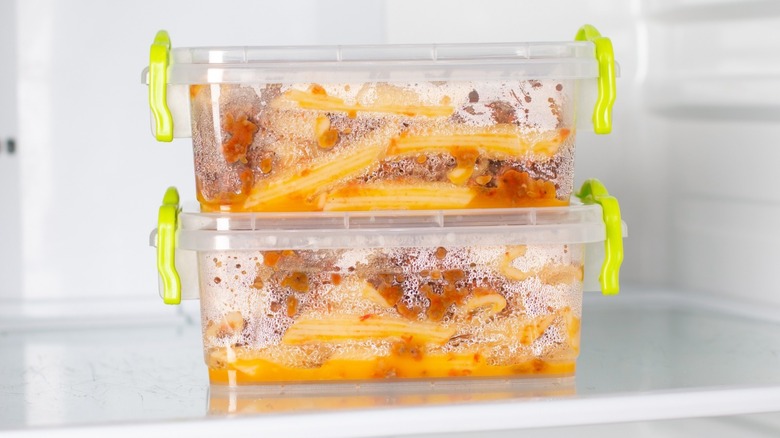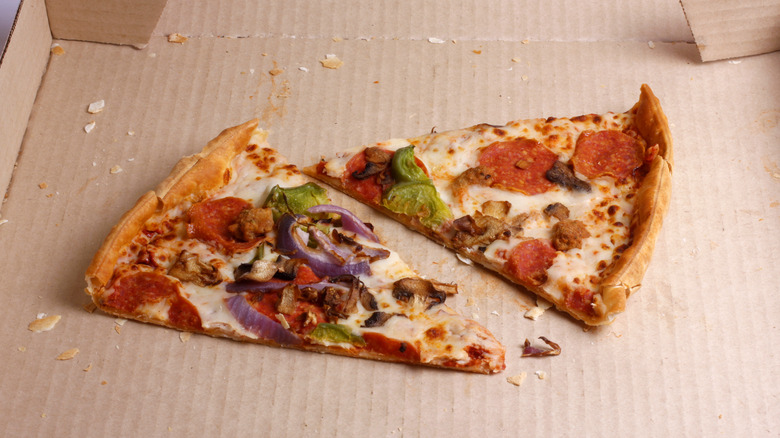The Scientific Reason Leftovers Taste So Good
The Friday after Thanksgiving. Lunch after a fancy night out. Day-old pizza and fried chicken. There is an age-old question by which all of these culinary occasions are connected: Why on earth do leftovers hit the spot? Well, the answer is no, you're not dreaming when a heaping plate of carved turkey, mashed potatoes, and green bean casserole tastes even better than it did yesterday, or that the Papa John's that sat in the fridge overnight is arguably the best thing you've eaten all month.
As it turns out, there is indeed a real scientific explanation as to why leftovers have the power to bring us unexplainable amounts of joy. These surplus scraps we refuse to let go to waste often offer more than we had hoped. Not only do we get to hit the replay button and indulge in a delicious meal yet again, but the food's flavor and texture after marinating for several hours, sometimes days, is even sometimes preferred. It comes down to how the various ingredients in a dish, including spices, proteins, starches, and fats, continue to meld together long after they're fully cooked, resulting in an umami masterpiece worth waiting for.
Leftovers undergo unique flavor-improving chemical reactions
Many beloved recipes, such as stew, soup, chili, meatloaf, pasta, and of course, pizza, taste divine the next day. Leftovers are truly a category all their own, and plenty of folks swear by their palatability. If you recall, there was even an entire cooking show around the subject, "Best Leftovers Ever!" But how exactly do remnants become so delectably devourable? It has to do with a combination of chemistry and physics.
Foods that are given a second chance at life experience a number of changes. For instance, alliums such as garlic, onions, and chives, as well as cruciferous veggies like cabbage, broccoli, and Brussels sprouts, tend to transform from bitter to mellow as their sulfur-heavy compositions oxidize over time. Foods that contain lots of starch, including corn, peas, and potatoes, can also turn sweeter as the natural sugars fragment.
As a renowned food scientist and nutrition expert Kantha Shelke explained to Forbes, when a meal is reheated after cooling off, chemical reactions among the aromatic ingredients recommence. "In general, as the food cools and is left to sit in the fridge, and then re-heated, some of these reactions continue to take place resulting in improved flavor," she explained. Meanwhile, the seasoned elements continue to naturally intermingle with one another, even while chilling in the refrigerator. So, apparently, it's true some that things really do get better with age.

